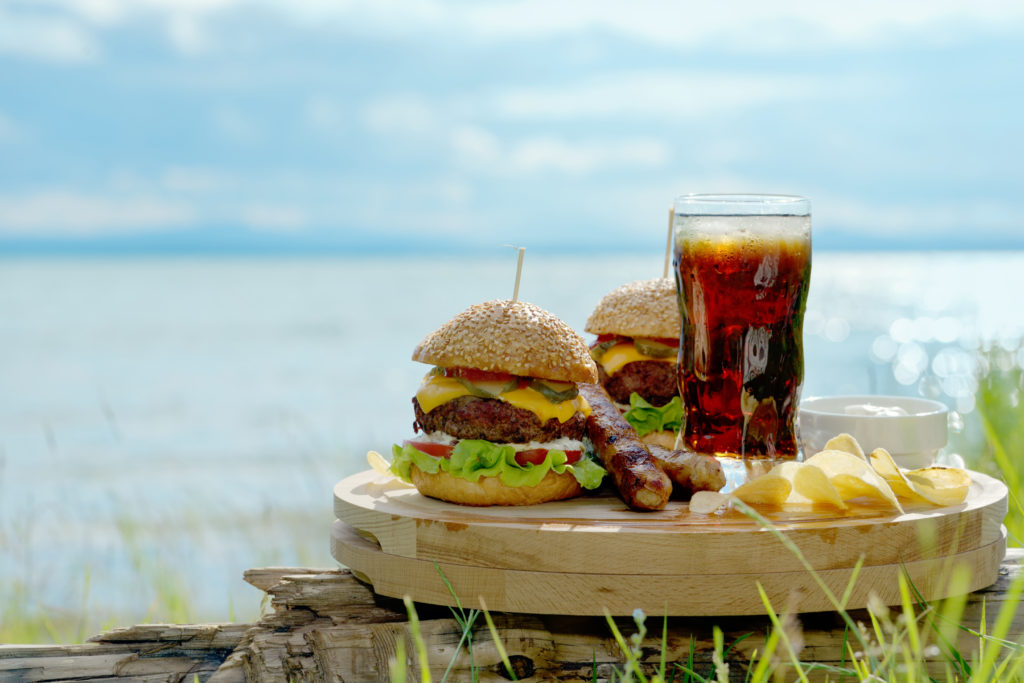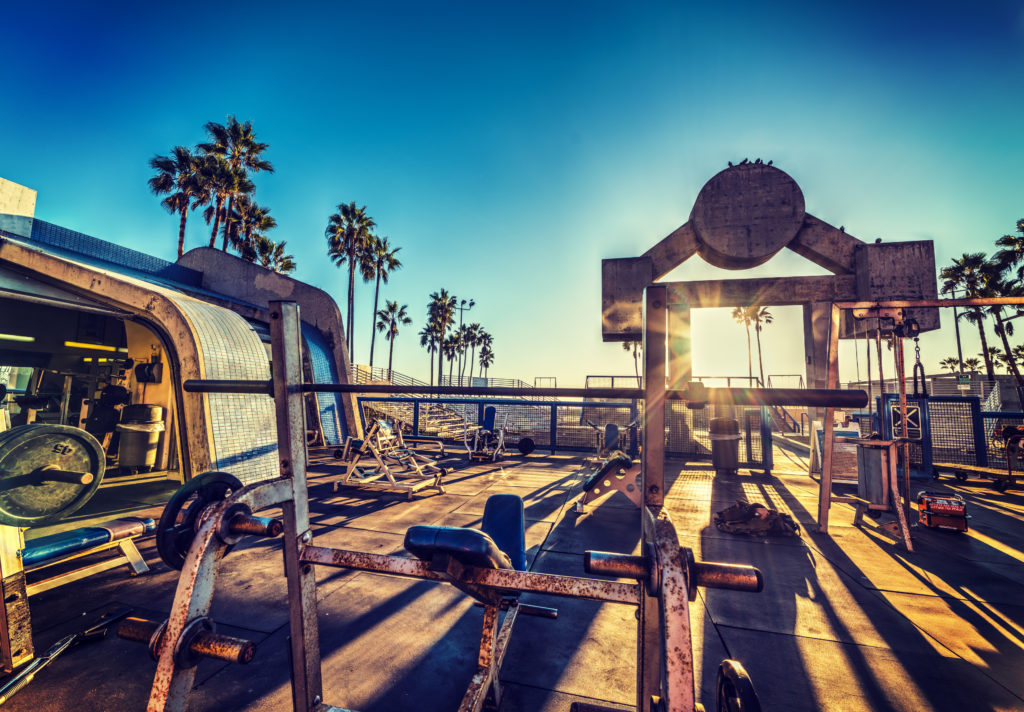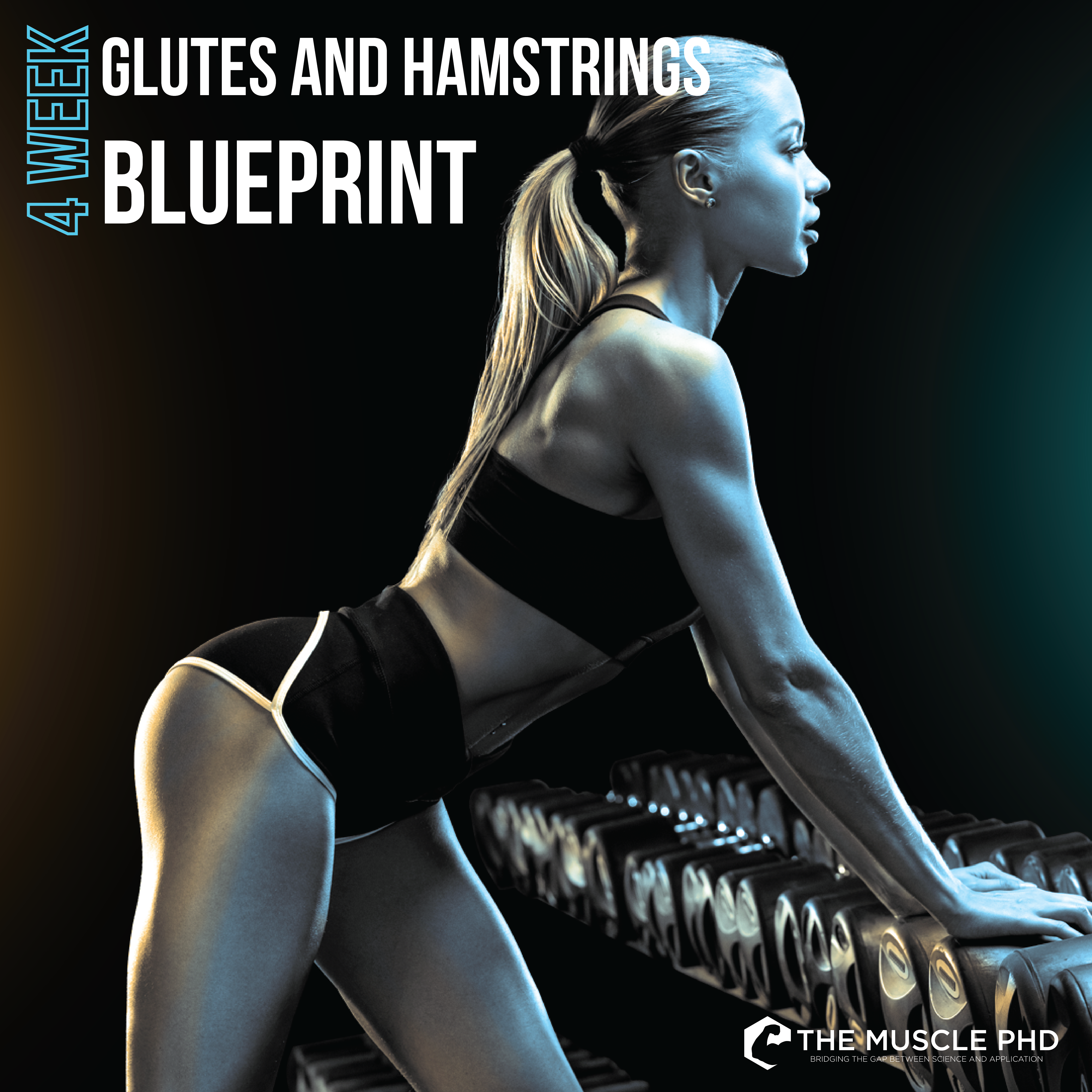Introduction
Ah yes, spring is in the air and every bodybuilder north of Florida and SoCal is eyeing their yearly summer cut to display their best physique on the beach. Their entire winter was spent in full sweats, cranking away at the weights and smashing metric tons of food. Now, it’s finally time to whittle away at that proverbial block of marble to show off all of the winter’s hard work. A proper cut dazzles at the beach and immediately gets guys asking you how much you bench (while the ladies continue to ignore you). Oh well, at least you’re ripped, right?
Since displaying your hard-earned gains at the beach is important to many bodybuilders, let’s get into some of the basics of how to cut, from both a nutrition and training standpoint. Before we get started, though, we need to remind people that this is a cutting for the summer piece, not a competition prep article. Peak weak and all of that cranky prep nonsense are outside the scope of this article (thank god).
Nutrition for Cutting
 What’s the first thing a bodybuilder does when they decide to cut? Reduce calorie intake. And yes, if you want to lose some weight and get shredded for the beach within a reasonable amount of time, you’re going to have to be burning more calories than you’re taking in. However, research shows us that our metabolic rate actually adapts to a low calorie diet by slowing down (6,9). Therefore, if you want to keep your metabolism up to avoid having to crash diet, you’re going to have to add some energy variation in your diet (17).
What’s the first thing a bodybuilder does when they decide to cut? Reduce calorie intake. And yes, if you want to lose some weight and get shredded for the beach within a reasonable amount of time, you’re going to have to be burning more calories than you’re taking in. However, research shows us that our metabolic rate actually adapts to a low calorie diet by slowing down (6,9). Therefore, if you want to keep your metabolism up to avoid having to crash diet, you’re going to have to add some energy variation in your diet (17).
One way to do this is by performing calorie cycling. The easiest way to do this is by imagining a 14-day period. For 11 of these 14-days, you’ll consume a calorie deficit in which you burn more calories than you eat. However, for the last 3-days of the 14-day period, you’ll eat at maintenance or even slightly above maintenance before returning back to the deficit for the next 11-days and repeating the cycle. This method has been shown to more effective at preserving a metabolic rate close to baseline than simple caloric restriction and is also better for returning to baseline metabolic rate following the end of the diet (8). Since you’ll probably revert back to maintenance once your cut is over, following a calorie cycling plan can help avoid some of the rebound pitfalls often associated with diets.
So now we know that we shouldn’t just stick to a constant deficit, but how should you go about planning a caloric deficit to lose weight? Focusing on a daily deficit isn’t the best idea, especially if you’re calorie cycling (like you should be). Therefore, stick to a weekly deficit plan so you can see how your diet is working overall (17). So how big should this deficit be?
We know that the size of a deficit can determine what type of weight you lose – AKA a huge calorie deficit will likely result in some muscle loss whereas a less aggressive deficit will primarily cause fat loss (11,15). In addition, sticking to a smaller deficit will also help maintain testosterone levels (21) which can have major implications for maintaining muscle mass during your cut.
To keep a deficit in this less aggressive range, you should focus on losing about 0.5-1% of your total body weight per week. For a 200-lb bodybuilder, this equates to 1-2 pounds of weight loss per week. An easy way to calculate this is by assuming there’s ~3500 calories in a pound of fat (15,17). Simply find how many pounds you need to lose each week, multiply that number by 3500, and divide by 7 to find your average daily deficit.
So, we’ve covered deficits and calorie cycling, but how do you modify macronutrient intake to optimize the effects of your diet? Let’s discuss.
Carbs
Carbs are typically the first macronutrient that people adjust when planning a cutting diet, and for good reason. Research has shown several times that fat loss is typically maximized in low-carb, high-protein diets (17,20,27). It’s important to remember, though, that carbs can be both useful for workout performance, pumps, and physical appearance, so don’t completely cut out carbs, unless you’re going keto or something similar. Carbs are still the main energy source used during training, and severely restricting carb intake will more than likely impair your workouts, especially if you’re training for more than an hour.
 For extra beach fun, though, a carb load may actually help improve your appearance for maximum beach domination. Carb loads have been shown to increase muscle thickness (3) and have even tricked DXA machines into reading higher lean mass content (23) due to increases in muscle glycogen concentrations. This could be a fun method to use if you’re planning a specific beach holiday or pool party in which you really want to show off your gains – depleting carbs a week out and then performing a carb load for 3-days before the event may make you appear even bigger!
For extra beach fun, though, a carb load may actually help improve your appearance for maximum beach domination. Carb loads have been shown to increase muscle thickness (3) and have even tricked DXA machines into reading higher lean mass content (23) due to increases in muscle glycogen concentrations. This could be a fun method to use if you’re planning a specific beach holiday or pool party in which you really want to show off your gains – depleting carbs a week out and then performing a carb load for 3-days before the event may make you appear even bigger!
Ultimately, cutting carbs can be an effective method of creating a calorie deficit, but you don’t want to drop carbs to the point to where your workouts are ineffective, your pumps are deflating, and your crankiness is unbearable. So how far should you drop them?
Let’s assume you’re the 200lb bodybuilder we mentioned earlier. We’ll put you at 5’10” and 25-years-old to keep things simple. Therefore, your maintenance calories would be around 3050-calories as calculated by the Mifflin-St. Jeor equation (12). After subtracting the forthcoming protein and fat recommendations and the calorie deficit needed for cutting 0.5% body weight (17), you’re left with about 150-200 grams of carbs per day.
Now, to some, that may still sound like a lot of carbs. It’s worth remembering, though, that nutrition is a highly individualized subject and some people may respond better to certain macronutrient ratios than others (13). Therefore, continue to adjust your carb and fat intake until you find the ratio that works best for you. As we’ll cover in the next section, consuming adequate protein is something that every bodybuilder on a diet should be doing, regardless of other macro preferences.
Protein
While adjusting both carb and fat intake is extremely important for creating your calorie deficit, keeping protein intake high during a diet is absolutely necessary for a variety of reasons. Studies have shown that increasing protein intake to 1.5g/lb can actually help athletes lose fat even during a calorie surplus (2). This is probably due to the fact that protein is the most thermogenic macronutrient (28) which means that it requires more energy to both digest and absorb protein compared to carbs or fats.
In addition, as you get leaner during a cut, protein needs may actually increase. Studies show that leaner individuals require more protein to maintain muscle mass during periods of calorie restriction (10,15). This is most likely due to the fact that as you get leaner, the amount of fat you have to burn for energy becomes more limited. Therefore, it may be more likely that you tap into muscle tissue for energy production as you lean out.
Both of the recent reviews on protein needs for bodybuilders state that individuals should shoot for 2.3-3.1g/kg (~1-1.5g/lb) of protein per day during a cut (17,22). Therefore, as your cut progresses and you get leaner, work your way up this range to help preserve your precious muscle tissue. Adding calories to your diet through protein is very unlikely to cause fat gain (22), so don’t be afraid to err on the side of higher protein intakes when your goal is to optimize body composition and aesthetics.
Keeping this in mind, our example 200lb bodybuilder should start his cutting diet around 200-210 grams of protein per day and slowly ramp up closer to 300 grams per day as he gets leaner. Since a diet designed to create a weight loss of 0.5% per week would result in an average daily intake of roughly 2500 calories for this bodybuilder, his protein intake would range from 32-48% of his total daily calories depending on how lean he is.
Fat
 Fat intake typically isn’t talked about much when considering bodybuilding diets for the non-keto crowd and that’s mostly due to the fact that the majority of research into sports nutrition has focused on carbs and protein. However, when undergoing a cutting diet, it’s important to remember that dietary fat intake has a strong correlation with testosterone, and reducing this intake may also reduce your testosterone levels (16).
Fat intake typically isn’t talked about much when considering bodybuilding diets for the non-keto crowd and that’s mostly due to the fact that the majority of research into sports nutrition has focused on carbs and protein. However, when undergoing a cutting diet, it’s important to remember that dietary fat intake has a strong correlation with testosterone, and reducing this intake may also reduce your testosterone levels (16).
In addition, losing body fat in general may also reduce testosterone levels (17) which means it’s very important to maintain proper fat intake during a cutting diet. However, as you progress in your diet and need to further increase your calorie deficit to continue losing weight, make sure you’re still dropping fat and carbs instead of protein. Even though fat is correlated with testosterone, dropping fat intake will still have fewer negative impacts on your physique than dropping protein calories.
A review on cutting for bodybuilders states that maintaining fat intake in the 15-30% of total calories range is best for maintaining testosterone levels during caloric restriction (17). As you start your diet, shoot for the 25-30% range so that you have some flexibility to drop fat calories as needed throughout your diet. For most bodybuilders, it will still probably be more effective to create the majority of your deficit by dropping carb intake rather than fat. Therefore, for our 200lb bodybuilder shooting for a daily average of 2500 calories, he should aim for 42-83 grams of fat per day, starting on the higher end and working down as needed throughout the diet.
Macronutrient Ratio
With the above discussions, we can mostly nail down the, “optimal,” macro split for cutting as 40-30-30 protein-carb-fat. Again, as we mentioned earlier, dieting is highly individualized and altering intake of both fats and carbs to find your personal, “sweet spot,” is likely necessary to get the most out of your diet.
One last topic to cover on nutrition is the idea of processed foods. Processed foods are, really, an entire conversation on their own. But, it’s worth noting that consuming processed foods can actually seriously reduce the thermogenic effect of food. Studies have compared processed foods with whole foods and have found that consuming processed foods leads to a much lower metabolic response than eating whole foods (4). If the goal of your diet is to create a caloric deficit, sticking to whole foods as much as possible is a trick to help optimize that deficit. Processed foods will more than likely throw off many of your calculations and/or estimates so it’ll be easier to just avoid them overall.
Training During a Cut
Thankfully, this section will be much smaller as, frankly, there’s not many alterations you need to make to your training during a cut. The main issue to keep in mind, however, is that your overall goal changes when you’re cutting; you’re no longer training to grow, you’re simply training to maintain your current mass while losing fat mass. Re-comping is certainly possible, but we’re going to assume you have a 2-3 month period for this cut rather than 6-months plus for a true re-comp. Therefore, the focus of your training needs to switch a little bit to support the goal of fat loss.
Maintaining resistance training is incredibly important as resistance training can both boost your metabolism (14) and will help maintain muscle mass during your cut (18). Thankfully, doing a massive amount of volume isn’t necessary to get an even greater metabolic boost (1) so you don’t have to worry about doing extra work during a cut for maximum shreds. You’ll certainly burn more calories during higher volume sessions, but you also have to make sure you’re not doing too much to the point that you cannot recover from your training. Nutrition should also support your training, and since caloric intake drops during a cut, training volume should probably drop, too.
The good news is that performing fewer reps with more weight is just as effective at promoting growth as traditional bodybuilding training (24). Therefore, you can easily drop volume during a cut by just raising intensity and lowering reps. And for those of you worried about dropping volume, studies have shown that you can drop training volume by quite a bit and still maintain muscle mass (5). While a massive drop in volume wouldn’t necessarily be advised during a cut, a small drop is certainly fine and probably warranted. As long as you’re still providing the muscle with enough tension to promote maintenance, you’re not going to lose significant size (26).
 In addition, training to failure multiple times during a workout probably isn’t the smartest idea during a cut. Training to failure too often can actually increase catabolic hormone production and decrease anabolic hormone levels (19) – something that would not be optimal for a cut in any way, shape, or form. However, if you stick to heavier weights and fewer reps, you won’t necessarily need to perform sets to failure you get the most bang-for-your-buck out of training.
In addition, training to failure multiple times during a workout probably isn’t the smartest idea during a cut. Training to failure too often can actually increase catabolic hormone production and decrease anabolic hormone levels (19) – something that would not be optimal for a cut in any way, shape, or form. However, if you stick to heavier weights and fewer reps, you won’t necessarily need to perform sets to failure you get the most bang-for-your-buck out of training.
Realistically, your workouts don’t need to change too much during a cut besides dropping volume. You can definitely add cardio, but adding things like interval sprints or circuit training might be a better idea than steady state cardio as these will be less likely to interfere with muscle mass maintenance during a cut (29). Cardio should be kept to no more than 4 days a week and no more than 30-minutes per session to keep any interference effects to a minimum. Also, don’t do any cardio before or after leg workouts as this can impair either the workout or recovery from the workout depending on when you do said cardio (29).
Conclusion
Realistically, cutting really isn’t a whole lot different from bulking; you’re simply switching goals. As long as your nutrition and training is supporting your goal, you’re on the right track. Follow the dieting tips above to optimize your cutting nutrition, and reduce your training volume a little bit to avoid overtraining or even injury during periods of caloric restriction. Nothing looks worse on the beach than a leg brace, so always pay close attention to how your body is responding to your diet and training.
If you’re interested in reading any of these topics in further detail, check out the extensive reviews by Dr. Eric Helms and colleagues on nutrition (here) and training (here). Both of these reviews were of great assistance for developing this piece, so we definitely want to give credit where credit is due.
References
- Abboud, G. J., Greer, B. K., Campbell, S. C., & Panton, L. B. (2013). Effects of load-volume on EPOC after acute bouts of resistance training in resistance-trained men. The Journal of Strength & Conditioning Research, 27(7), 1936-1941.
- Antonio, J., Ellerbroek, A., Silver, T., Orris, S., Scheiner, M., Gonzalez, A., & Peacock, C. A. (2015). A high protein diet (3.4 g/kg/d) combined with a heavy resistance training program improves body composition in healthy trained men and women–a follow-up investigation. Journal of the International Society of Sports Nutrition, 12(1), 39.
- Bamman, M. M., Hunter, G. R., Newton, L. E., Roney, R. K., & Khaled, M. A. (1993). Changes in body composition, diet, and strength of bodybuilders during the 12 weeks prior to competition. The Journal of Sports Medicine and Physical Fitness, 33(4), 383-391.
- Barr, S., & Wright, J. (2010). Postprandial energy expenditure in whole-food and processed-food meals: implications for daily energy expenditure. Food & Nutrition research, 54(1), 5144.
- Bickel, C. S., Cross, J. M., & Bamman, M. M. (2011). Exercise dosing to retain resistance training adaptations in young and older adults. Medicine & Science in Sports & Exercise, 43(7), 1177-1187.
- Bouchard, C., Tremblay, A., Nadeau, A., Dussault, J., Despres, J. P., Theriault, G., … & Fournier, G. (1990). Long-term exercise training with constant energy intake. 1: Effect on body composition and selected metabolic variables. International Journal of Obesity, 14(1), 57-73.
- Broeder, C. E., Burrhus, K. A., Svanevik, L. S., & Wilmore, J. H. (1992). The effects of either high-intensity resistance or endurance training on resting metabolic rate. The American Journal of Clinical Nutrition, 55(4), 802-810.
- Davoodi, S. H., Ajami, M., Ayatollahi, S. A., Dowlatshahi, K., Javedan, G., & Pazoki-Toroudi, H. R. (2014). Calorie shifting diet versus calorie restriction diet: a comparative clinical trial study. International Journal of Preventive Medicine, 5(4), 447.
- Donnelly, J. E., & Smith, B. K. (2005). Is exercise effective for weight loss with ad libitum diet? Energy balance, compensation, and gender differences. Exercise and Sport Sciences Reviews, 33(4), 169-174.
- Elia, M. R. J. S., Stubbs, R. J., & Henry, C. J. K. (1999). Differences in fat, carbohydrate, and protein metabolism between lean and obese subjects undergoing total starvation. Obesity Research, 7(6), 597-604.
- Forbes, G. B. (2000). Body fat content influences the body composition response to nutrition and exercise. Annals of the New York Academy of Sciences, 904(1), 359-365.
- Glass, S., Dwyer, G. B., & American College of Sports Medicine (Eds.). (2007). ACSM’S metabolic calculations handbook. Lippincott Williams & Wilkins.
- Goedecke, J. H., Gibson, A. S. C., Grobler, L., Collins, M., Noakes, T. D., & Lambert, E. V. (2000). Determinants of the variability in respiratory exchange ratio at rest and during exercise in trained athletes. American Journal of Physiology-Endocrinology And Metabolism, 279(6), E1325-E1334.
- Greer, B. K., Sirithienthad, P., Moffatt, R. J., Marcello, R. T., & Panton, L. B. (2015). EPOC comparison between isocaloric bouts of steady-state aerobic, intermittent aerobic, and resistance training. Research Quarterly for Exercise and Sport, 86(2), 190-195.
- Hall, K. D. (2008). What is the required energy deficit per unit weight loss? International Journal of Obesity, 32(3), 573.
- Hämäläinen, E. K., Adlercreutz, H., Puska, P., & Pietinen, P. (1983). Decrease of serum total and free testosterone during a low-fat high-fibre diet. Journal of Steroid Biochemistry, 18(3), 369-370.
- Helms, E. R., Aragon, A. A., & Fitschen, P. J. (2014). Evidence-based recommendations for natural bodybuilding contest preparation: nutrition and supplementation. Journal of the International Society of Sports Nutrition, 11(1), 20.
- Helms, E. R., Fitschen, P. J., Aragon, A. A., Cronin, J., & Schoenfeld, B. J. (2015). Recommendations for natural bodybuilding contest preparation: resistance and cardiovascular training.
- Izquierdo, M., Ibanez, J., González-Badillo, J. J., Hakkinen, K., Ratamess, N. A., Kraemer, W. J., … & Gorostiaga, E. M. (2006). Differential effects of strength training leading to failure versus not to failure on hormonal responses, strength, and muscle power gains. Journal of Applied Physiology, 100(5), 1647-1656.
- Layman, D. K., Boileau, R. A., Erickson, D. J., Painter, J. E., Shiue, H., Sather, C., & Christou, D. D. (2003). A reduced ratio of dietary carbohydrate to protein improves body composition and blood lipid profiles during weight loss in adult women. The Journal of Nutrition, 133(2), 411-417.
- Mero, A. A., Huovinen, H., Matintupa, O., Hulmi, J. J., Puurtinen, R., Hohtari, H., & Karila, T. A. (2010). Moderate energy restriction with high protein diet results in healthier outcome in women. Journal of the International Society of Sports Nutrition, 7(1), 4.
- Ribeiro, A. S., Nunes, J. P., & Schoenfeld, B. J. (2019). Should Competitive Bodybuilders Ingest More Protein than Current Evidence-Based Recommendations? Sports Medicine, 1-5.
- Rouillier, M. A., David-Riel, S., Brazeau, A. S., St-Pierre, D. H., & Karelis, A. D. (2015). Effect of an acute high carbohydrate diet on body composition using DXA in young men. Annals of Nutrition and Metabolism, 66(4), 233-236.
- Schoenfeld, B. J., Ratamess, N. A., Peterson, M. D., Contreras, B., Sonmez, G. T., & Alvar, B. A. (2014). Effects of different volume-equated resistance training loading strategies on muscular adaptations in well-trained men. The Journal of Strength & Conditioning Research, 28(10), 2909-2918.
- Schuenke, M. D., Mikat, R. P., & McBride, J. M. (2002). Effect of an acute period of resistance exercise on excess post-exercise oxygen consumption: implications for body mass management. European Journal of Applied Physiology, 86(5), 411-417.
- Wackerhage, H., Schoenfeld, B. J., Hamilton, D. L., Lehti, M., & Hulmi, J. J. (2018). Stimuli and sensors that initiate skeletal muscle hypertrophy following resistance exercise. Journal of Applied Physiology, 126(1), 30-43.
- Westerterp-Plantenga, M. S. (2008). Protein intake and energy balance. Regulatory Peptides, 149(1-3), 67-69.
- Westerterp, K. R., Wilson, S. A. J., & Rolland, V. (1999). Diet induced thermogenesis measured over 24h in a respiration chamber: effect of diet composition. International Journal of Obesity, 23(3), 287.
- Wilson, J. M., Marin, P. J., Rhea, M. R., Wilson, S. M., Loenneke, J. P., & Anderson, J. C. (2012). Concurrent training: a meta-analysis examining interference of aerobic and resistance exercises. The Journal of Strength & Conditioning Research, 26(8), 2293-2307.
From being a mediocre athlete, to professional powerlifter and strength coach, and now to researcher and writer, Charlie combines education and experience in the effort to help Bridge the Gap Between Science and Application. Charlie performs double duty by being the Content Manager for The Muscle PhD as well as the Director of Human Performance at the Applied Science and Performance Institute in Tampa, FL. To appease the nerds, Charlie is a PhD candidate in Human Performance with a master’s degree in Kinesiology and a bachelor’s degree in Exercise Science. For more alphabet soup, Charlie is also a Certified Strength and Conditioning Specialist (CSCS), an ACSM-certified Exercise Physiologist (ACSM-EP), and a USA Weightlifting-certified performance coach (USAW).



